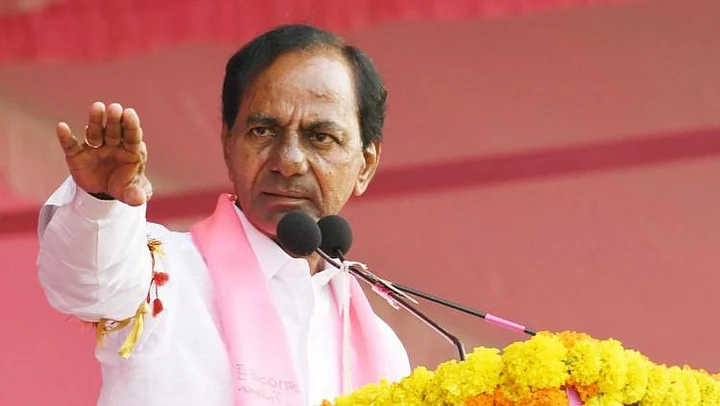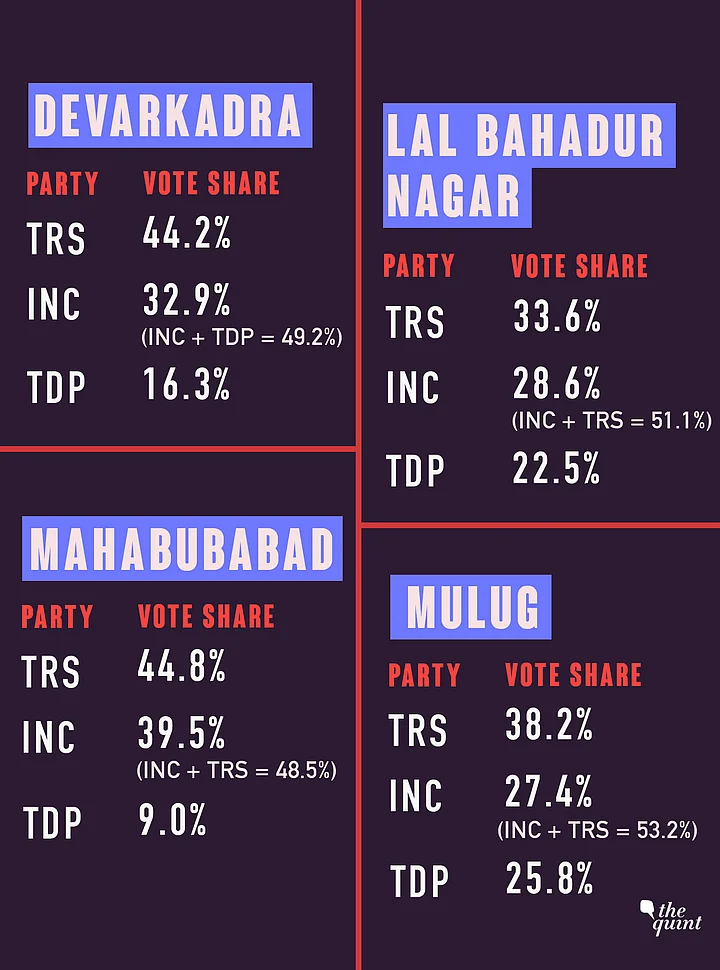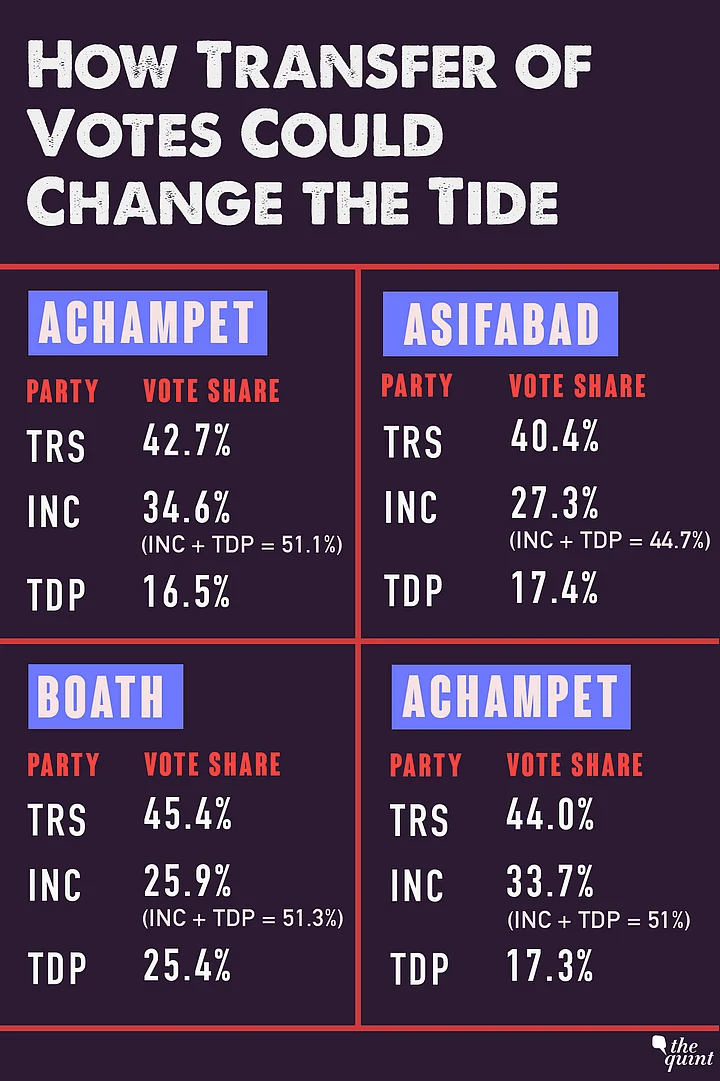Can Telangana Chief Minister K Chandrashekhar Rao, known as KCR, retain the chair or will he be overthrown by the Opposition alliance? The answer to the big question is just a few days away. Even though KCR is confident that his party will return to power, a closer look at his performance in the last election brings out several reasons for him to worry, especially with the Opposition attempting to unite their vote banks.
The first Assembly elections of Telangana were held just a month before the new state was born. Even though they went to poll during the peak of the euphoria, the Telangana Rashtra Samiti (TRS) led by KCR only managed to scrape through.
In the 119-strong Assembly, the magic number for forming the government is 60 and the TRS managed to get only 63 seats in 2014. Their vote share was only 34.3 percent, even though they fought the election riding on the Telangana pride.
The combined vote share of Opposition parties in 2014 goes way beyond the TRS’. Thus, in case of near perfect transfer of votes between these alliance partners, the TRS would find it difficult to bring a large 6 percent vote share swing.
How Transfer of Votes Could Change the Tide
Here are some examples of constituencies where, in 2014, the combined vote share of the TDP and the Congress were higher than the winning TRS candidates.
- 01/03Graphics: Arnica Kala

- 02/03Graphics: Arnica Kala

- 03/03Graphics: Arnica Kala

Here are some constituencies where the TRS’ margin of victory was between 1-2 percent.
The Defector Factor
Although the TRS’ strength in the Assembly was 63 after the 2014 elections, by 2018, their majority increased to 90 MLAs. Over the four years, 12 Congress MLAs, 13 TDP MLAs, 3 YSR Congress MLAs and 2 BSP MLAs defected to the TRS.
One of the arguments against the alliance affecting KCR, concerns these defectors. The list of the defectors includes several leaders who have a following of their own and could take some vote share with them to the TRS.
The defection, however, doesn’t mean a certain transfer of votes to the TRS. Several constituencies in Telangana remain strongholds of the TDP, thanks to Andhra settlers. Even though some senior leaders have defected, the TDP is confident that their traditional vote banks will continue to support them.
Tough Battle At Home for KCR
Despite being a tall leader of the TRS, KCR won the Gajwel seat by a mere 19,391 votes and he had 9.9 percent more votes than second-placed TDP. The combined vote share of the Congress and the TDP candidates was 51.4 percent, while KCR’s vote share was 44.1 percent.
Unless KCR manages to increase his vote share in the upcoming election, he might end up with a humiliating defeat.
From Pro-Telangana to Anti-Naidu
For KCR, it is clear that the ‘Telangana sentiment’ will not win him votes.
This is one of the reasons why there has been a change in his campaign strategy. While his 2014 campaign focused on ‘Telangana pride’ and ‘Anti-Andhra’ agenda, in 2018 his focus was ‘anti-Chandra Babu Naidu’. During his rallies, he has been accusing Naidu of trying to jeopardise his government. He even argued that if the alliance comes to power, Naidu would remote control the Telangana government. “If the pride doesn’t work, then project an enemy,” said Jinka Nagaraju, a Hyderabad-based journalist, who covered Telangana politics for three decades.
However, focus remains on welfare schemes announced by his party. Raithu Bandhu, pension schemes, free electricity, 2BHK houses for all and other schemes have been KCR’s trump cards.
He had also rolled out community-specific schemes such as free sheep for the OBCs, washing machines for Dhobi community and schemes for barbers.
The Forgotten Promises
Even though KCR has launched several welfare schemes, the original promises of providing employment are yet to be fulfilled. KCR had promised to provide one lakh jobs to youth in 2014 manifesto. But at the end of his term, students, youth and the unemployed are on a warpath against the government for its failure to fill vacancies in government departments as promised.
Even the Dalits, who rallied behind the TRS during the Telangana agitation, have now totally distanced themselves from it, for his silence over caste violence and the failure to fulfil his poll promise of providing 3 acres land for Dalits.
Allegations of autocratic working style, keeping his family in positions of power and corruption too remain a disadvantage for KCR.
Finally, the transfer of votes between the alliance partners will play a crucial role in the outcome of the elections. However, the question remains if KCR will be able to eat into the alliance vote share with his scheme.



